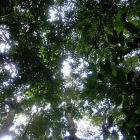Cropland expansion the culprit in biodiversity loss, says study
28 February 2013

Rapid cropland expansion is responsible for biodiversity loss, says a study
Flickr/CIFOR
[JAKARTA] Rapid cropland expansion is the main cause of
biodiversity loss in tropical countries, a study by UNEP's (the
UN Environment Programme) World Conservation Monitoring Centre and
the Cambridge Conservation Initiative has found.
The study, published in PLOS ONE last month (9 January),
highlights maize and soybean as the most expansive crops and as the
main drivers of biodiversity loss in tropical regions. Other crops
that pose a major threat to habitats and wildlife are beans,
cassava, cowpea, groundnut, millet, oil palm, rice, sorghum,
sugarcane and wheat, the study says.
SPEED READ
- Rapid expansion of crops such as maize and soybean is leading to biodiversity loss in tropical countries
- Researchers say pace of expansion could derail progress towards meeting the Aichi Biodiversity Targets
- A range of sustainability standards and policies are suggested as a way forward
It estimates that cropland in tropical countries expanded by
48,000 square kilometres per year from 1999 to 2008, with Brazil,
Ethiopia, Indonesia, Nigeria and Sudan experiencing the greatest
expansion.
Stuart H. M. Butchart, a UNEP researcher and one of the authors of
the study, tells SciDev.Net: "Unsustainable agriculture is
the most significant threat to biodiversity, but conservationists
have not previously paid much attention to quantifying which
particular crops have caused the greatest problems, nor which ones
may do so in the future. This [study] starts to address this issue".
One example of crop expansion cited in the study that has quickened
the rate of species extinction is the Mega Rice Project in
Kalimantan, Indonesia. Vast tracts of peat swamps were drained
starting from the late 1990s in misguided attempts to turn them into
rice plantations.
More than one million hectares, an area about a third the size of
Belgium, have been converted for
rice production, threatening the survival of Borneo's last
orangutans.
Similarly, peat and forest areas gave way to oil palm in Indonesia
and Malaysia while soybean expansion have also replaced habitats of
particularly high biodiversity value in the Brazilian Cerrado
savanna. Expanding maize cultivation also threatens the dry forests
of Madagascar.
Krystof Obidzinski, a scientist at the Centre for International
Forestry Research, in Bogor, Indonesia, says that large-scale land
acquisition is proceeding apace in countries like Indonesia — with
economic benefits dominating the agenda while environmental impacts
appear to be underestimated.
If the pace of expansion continues, the report warns, it could
derail progress towards meeting the Aichi Biodiversity Targets, a
set of 20, time-bound measurable targets aimed at halting global
biodiversity loss by the middle of the century.
Butchart believes there should be a system in place so that
consumers can make informed choices about the food they buy and how
sustainably they have been produced. Such a system could reduce and
minimise impacts of
agriculture on biodiversity.
Customers can then discern which products are least damaging to the
environment and producers have an incentive to minimise their
negative impacts.
The study highlights the urgent need for more effective
sustainability standards and policies addressing both production and
consumption of commodities including robust land-use planning in
agricultural frontiers, establishment of new protected areas or
REDD+ projects in places agriculture has not yet reached, and
reduction or elimination of incentives for land-demanding bioenergy
feedstocks.
This article has been produced by SciDev.Net's South-East
Asia & Pacific desk.
© 2013 SciDev.Net